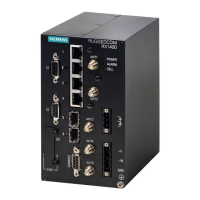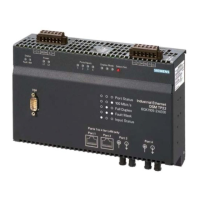Chapter 12
Tunneling and VPNs
RUGGEDCOM ROX II
CLI User Guide
380 Managing Dynamic L2TPv3 Tunnels
1. Make sure the CLI is in Configuration mode.
2. Delete the tunnel by typing:
no tunnel l2tpv3 static tunnel name
Where name is the name of the tunnel.
3. Type commit and press Enter to save the changes, or type revert and press Enter to abort.
Section12.4.4
Managing Dynamic L2TPv3 Tunnels
Configure dynamic L2TPv3 tunnels to carry Point-to-Point Protocol (PPP) traffic, as with L2TPv2, or when static
L2TPv3 tunnels are not supported by the peer device. Dynamic L2TPv3 tunnels have the ability to automatically
negotiate connections, and reestablish connections in the case of a network failure.
CONTENTS
• Section12.4.4.1, “Enabling and Configuring Dynamic L2TPv3 Tunnels”
• Section12.4.4.2, “Viewing a List of Dynamic L2TPv3 Tunnels”
• Section12.4.4.3, “Adding a Dynamic L2TPv3 Tunnel”
• Section12.4.4.4, “Deleting a Dynamic L2TPv3 Tunnel”
Section12.4.4.1
Enabling and Configuring Dynamic L2TPv3 Tunnels
To enable and configure dynamic L2TPv3 tunnels, do the following:
1. Make sure the CLI is in Configuration mode.
2. Enable dynamic L2TPv3 tunnels by typing:
tunnel l2tpv3 dynamic enabled
3. Configure the following parameters as required:
Parameter Description
mode { mode } Synopsis: { lac, lns }
Default: lns
The l2tp operational mode
log-level { log-level } Synopsis: { none, error, warning, notice, info, all }
Default: none
Logging message level
log-message { log-message } Synopsis: { none, protocol, fsm, api, transport, data, ppp, avp, func, system, all }
Default: none
Logging message category
4. Type commit and press Enter to save the changes, or type revert and press Enter to abort.

